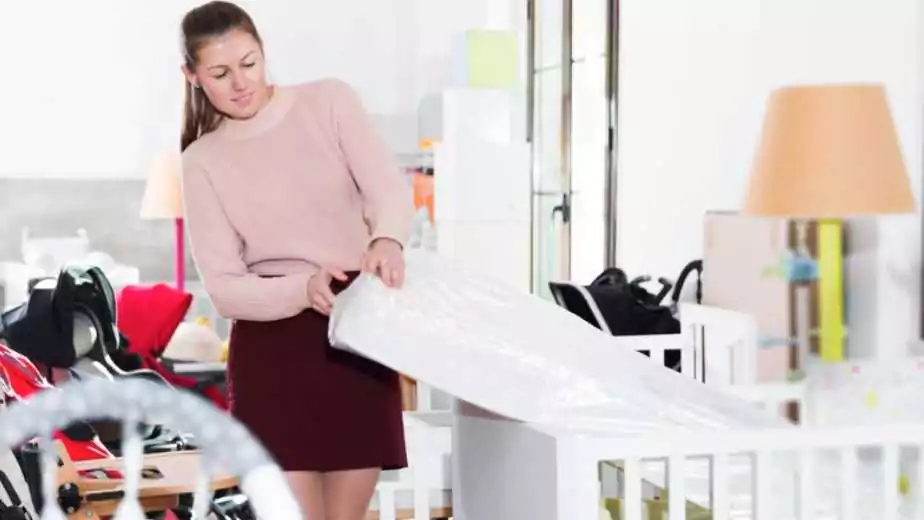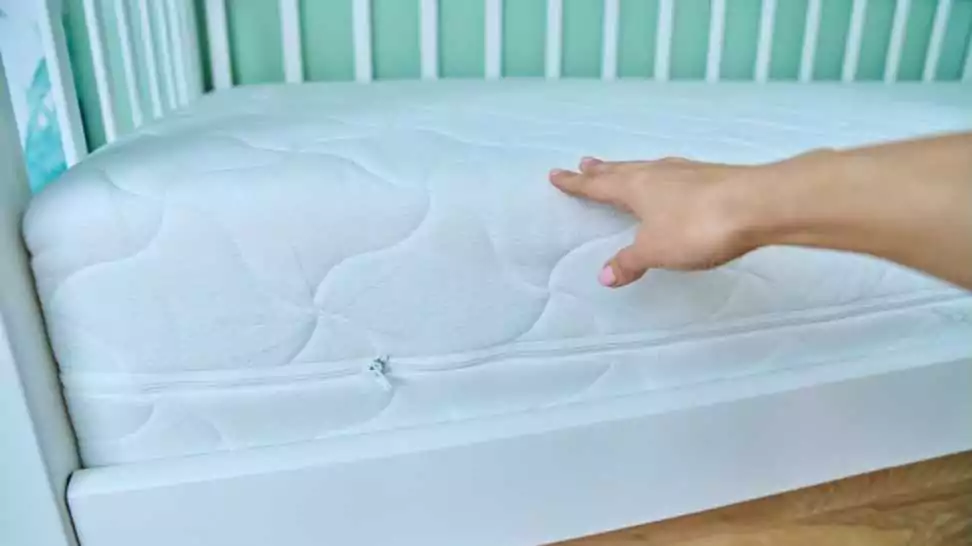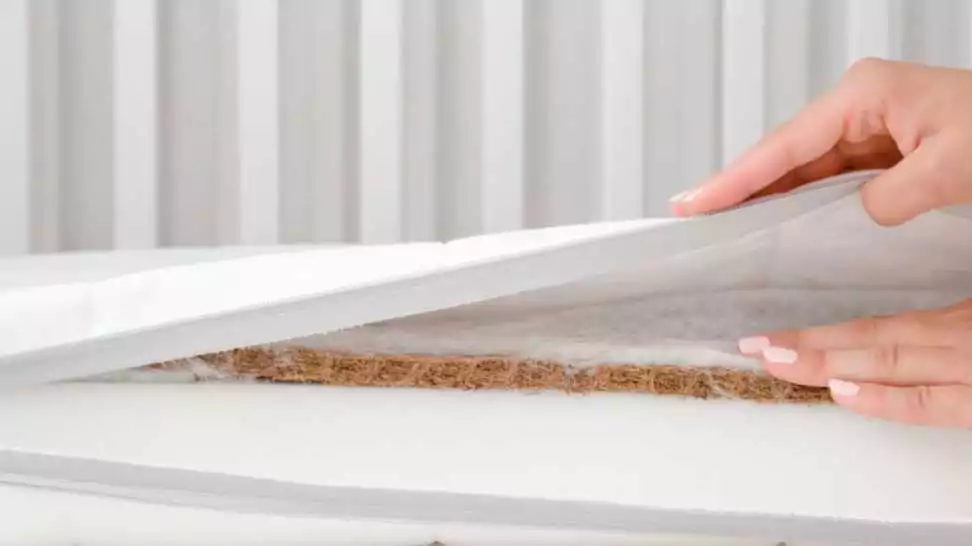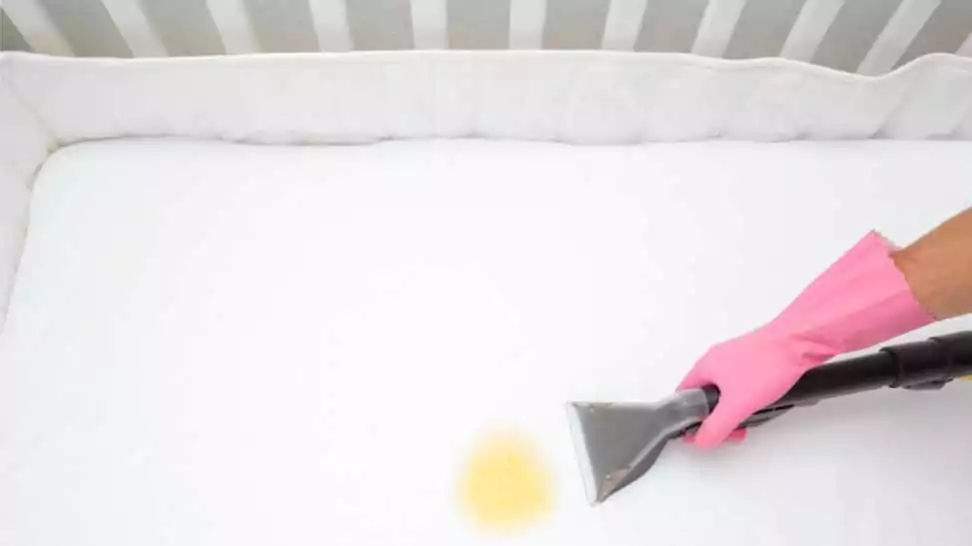How To Choose A Baby Crib Mattress?

As you embark on the wonderful journey of welcoming a new baby, one crucial item on your preparation list is the crib mattress. Far from being just another purchase, the right crib mattress plays a pivotal role in ensuring your baby’s comfort, safety, and healthy development during sleep.
The task of choosing the perfect mattress from a myriad of options can be daunting, especially for new parents. This guide aims to streamline this process, helping you select a crib mattress that combines safety, comfort, and durability. It’s crafted to assist you, whether you’re a first-time parent or expanding your family, in making a choice that transforms your baby’s crib into a sanctuary of comfort and safety.
In this comprehensive guide, we will delve into how to choose a baby crib mattress, different types of crib mattresses, essential features to consider, safety standards, and maintenance tips, all designed to lead you to the ideal mattress for peaceful and restful nights for your little one.
1 Understanding the Basics
What is a Crib Mattress?
A crib mattress, specifically designed for infants and young toddlers, is a fundamental part of your baby’s nursery. Unlike regular mattresses, crib mattresses are tailored to support the unique needs of a growing child during their early years. These mattresses are smaller in size to fit snugly in a baby crib, providing a firm surface that supports your baby’s developing spine and ensures their safety while sleeping.
The primary difference between a crib mattress and a regular mattress lies in its size, firmness, and safety features. Crib mattresses are designed with firmness that is ideal for babies, as soft bedding can increase the risk of Sudden Infant Death Syndrome (SIDS). Additionally, they are made to be the right size for cribs, which is crucial to prevent gaps that a baby might get trapped in.

Types of Crib Mattresses
Foam Mattresses
Pros:
- Lightweight: Foam mattresses are light, making it easier to change sheets and clean.
- Heat retention: They often retain heat well, keeping the baby warm.
- Cost-effective: Generally, these are more affordable than other types.
Cons:
- Variable firmness: The firmness can vary, and some may not be firm enough for infants.
- Durability: They may not hold up as long as innerspring or organic mattresses.
Innerspring Mattresses
Pros:
- Durability: Typically more durable and hold their shape well over time.
- Firm support: Offer a firm, even support, which is crucial for infants.
Cons:
- Heavier: These mattresses are heavier, making them more difficult to manoeuvre.
- Cost: Generally, they are more expensive than foam mattresses.
Organic Mattresses
Pros:
- Chemical-free: Made with natural materials, free from potentially harmful chemicals.
- Environmentally friendly: Often made with sustainable materials.
Cons:
- Price: Tend to be more expensive.
- Limited availability: Might not be as widely available as other types.
2 Safety Considerations
Ensuring the safety of your baby while they sleep is paramount. When it comes to crib mattresses, several safety considerations should be taken into account. Let’s explore the key factors that guarantee the safety and well-being of your little one.
Size and Fit

The right size and fit of a crib mattress are crucial for your baby’s safety. A mattress that doesn’t fit the crib properly can create dangerous gaps where a baby might get stuck, increasing the risk of injury or suffocation.
How to Measure for the Perfect Fit
- Measure the Crib: Use a tape measure to get the exact dimensions of the crib. Measure both the length and width from the inside.
- Check for Standard Sizing: Most cribs and crib mattresses are made in standard sizes, but it’s always good to check.
- Gap Test: Ideally, there should be no more than two fingers of space between the mattress and the crib walls. If you can fit more than two fingers, the mattress is too small.
Firmness

A firm mattress is essential for a baby’s safety. Soft surfaces can conform to the shape of a baby’s face or head, increasing the risk of suffocation.
How to Test for Firmness
- Push Test: Press your hand down into the mattress and then lift it off. The mattress should snapback readily and not conform to the shape of your hand.
- Stand Test: If it’s for a toddler, see if the mattress holds up when your child stands on it. It should not sink significantly.
Certifications and Standards
Safety standards and certifications ensure that the crib mattress meets specific safety and health requirements.
Key Certifications
- Consumer Product Safety Commission (CPSC): Ensures that the mattress meets federal safety standards.
- Green guard Certification: Indicates that the mattress has low chemical emissions, promoting a healthier sleeping environment for your baby.
How to Check for Certifications
- Look for Labels: Check the mattress labels for any mention of these certifications.
- Ask the Retailer: If in doubt, ask the retailer about the mattress’s safety certifications.
- Online Research: Visit the manufacturer’s website or look for online resources that list certified products.
3 Health and Comfort
While safety is a top priority, the health and comfort of your baby are equally important. The materials used in a crib mattress and its design features play a significant role in ensuring your baby sleeps in a healthy, comfortable environment.
Materials and Allergies
Hypoallergenic Materials
Hypoallergenic materials are crucial for babies, especially those with sensitive skin or allergies. These materials are less likely to cause allergic reactions as they resist dust mites, pet dander, and other common allergens.
Importance of Non-Toxic Materials
Babies spend a significant amount of time sleeping, so their mattresses must be made of non-toxic materials. Look for mattresses that are free from harmful chemicals like phthalates, lead, and volatile organic compounds (VOCs). Natural materials like organic cotton or natural latex are often good choices.

Breathability and Temperature Regulation
Importance of Air Circulation
A breathable mattress facilitates air circulation, reducing the risk of overheating and providing a comfortable sleep environment for your baby. Good air flow also helps to dissipate body heat and moisture, keeping the sleeping surface dry and comfortable.
Features for Temperature Regulation
- Perforated or Vented Design: Look for mattresses with ventilation holes or a perforated design to improve airflow.
- Moisture-Wicking Fabrics: Covers made from moisture-wicking materials help to keep the surface dry.
- Layered Construction: Some mattresses use specific layers or materials that promote breathability and temperature regulation.
4 Durability and Maintenance
A crib mattress is an investment in your baby’s health and safety. Understanding its durability and how to maintain it can ensure that this essential item serves its purpose effectively throughout its lifespan.
Lifespan of a Crib Mattress
Average Lifespan and Signs of Wear
The average lifespan of a crib mattress typically ranges from 3 to 5 years. However, this can vary based on the material and usage. Signs that indicate it’s time to replace the mattress include sagging, visible tears or cracks, and any loss of firmness that can’t adequately support your baby.
Tips for Extending the Life of the Mattress
- Use Mattress Protectors: These help shield the mattress from spills, diaper leaks, and other accidents.
- Rotate and Flip Regularly: This helps to distribute wear evenly.
- Follow Manufacturer’s Instructions: Adhere to the care guidelines provided by the manufacturer for specific materials.
Cleaning and Maintenance

Tips for Cleaning and Maintaining a Crib Mattress
- Vacuum Regularly: To remove dust and potential allergens.
- Spot Clean Spills Immediately: Use a mild soap and water solution for cleaning; avoid harsh chemicals.
- Air Out the Mattress: Occasionally let the mattress air out to prevent mold and mildew growth.
Importance of Waterproof Covers
- Protection Against Moisture: Waterproof covers protect the mattress from spills and accidents, which is essential for maintaining hygiene.
- Prevention of Mould and Bacteria: By keeping the mattress dry, these covers help prevent the growth of mould and bacteria.
- Ease of Cleaning: Waterproof covers can be easily wiped clean or washed, making maintenance simpler.
A well-maintained crib mattress not only ensures a healthier sleep environment for your baby but also offers better longevity, making it a cost-effective choice in the long run.
5 Budget Considerations
Investing in the right crib mattress is not only about comfort and safety; it’s also a financial decision. Understanding the cost implications and how to find the best value for your money can help you make a wise investment.
Price Range and Investment
Average Cost of Crib Mattresses
Crib mattresses vary widely in price, typically ranging from Rs. 1,000/- to over Rs. 70,000/-. The cost depends on the materials, design, and brand. Organic and high-end models tend to be on the higher end of this spectrum.
Importance of Investing in Quality
While it might be tempting to opt for a cheaper mattress, investing in a quality mattress is crucial for your baby’s health and safety. A good mattress not only provides the necessary support and comfort but also adheres to safety standards, ensuring a safe sleeping environment.
Tips for Finding the Best Value
Balancing Quality and Cost
- Research Different Brands and Types: Understand the features and benefits of various mattresses within your budget.
- Read Reviews: Look for customer reviews and ratings to gauge the performance and durability of the mattress.
- Check for Certifications: Ensure the mattress meets safety and health standards, regardless of the price.
Recommendations for Budget-Friendly Options
- Look for Sales and Discounts: Many retailers offer sales during certain times of the year.
- Consider Mid-Range Options: These often provide a good balance between quality and price.
- Check for Warranties: A good warranty can add value, offering protection against defects or issues.
6 Wrapping Up
Choosing the right crib mattress is a critical decision for your baby’s safety, comfort, and overall well-being. From understanding the basics and safety standards to considering health, comfort, durability, and budget, this guide has provided comprehensive insights to help you navigate the process. Remember to prioritise safety features, opt for hypoallergenic and non-toxic materials, and find a balance between quality and cost. By keeping these factors in mind, you can select a crib mattress that offers the best for your baby and peace of mind for you.
Community Q&A
About This Article
This article has been viewed 90 times.



